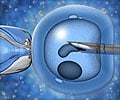Types of Female Sexual Dysfunction
Hypoactive sexual disorder, sexual arousal disorder, sexual aversion disorder, orgasmic disorder, dyspareunia, and vaginismus are the types of female sexual disorders.
Types of female sexual disorder are-
1. Hypoactive sexual desire disorder
Hypoactive sexual desire disorder is characterized by an absence of libido or the intrinsic lack of desire to have sexual relationship. Persistent or recurring deficiency (or absence) of sexual fantasies/thoughts and sexual activity may sometimes cause personal distress.
Hypoactive sexual disorder may also result from psychological/emotional factors or be secondary to medical problems such as hormone deficiencies, and medical or surgical interventions. Any disruption of the female hormonal system caused by natural menopause, surgically or medically-induced menopause; or endocrine disorders can also result in inhibited sexual desire.
2. Sexual aversion disorder
Sexual aversion disorder is characterized by an aversion to or avoidance or dismissal of sexual contact with a partner.
It is generally a psychological or emotional problem that can be due to various other underlying long-standing emotional problems like physical or sexual abuse or childhood trauma.
3. Female sexual arousal disorder
Female sexual arousal disorder is when a female does not feel a sexual response in the body or is unable to keep up the arousal.
Some disorders of arousal include lack of or diminished vaginal lubrication, decreased clitoral and labial sensation, decreased clitoral and labial engorgement or lack of vaginal smooth muscle relaxation. These conditions may occur secondary to psychological factors; however often there is a medical/physiologic basis such as diminished vaginal/clitoral blood flow, previous injury or fracture to pelvic bones, pelvic surgery or sometimes it is a result of medications.
4. Female orgasmic disorder
Female orgasmic disorder is defined as the delay or absence of orgasm after ‘normal’ arousal.
This may be a primary (never achieved orgasm) or a secondary condition, as a result of surgery, trauma, or hormone deficiencies. Primary orgasm can be due to emotional trauma or sexual abuse. Medical and/or physical factors can certainly contribute to the problem.
5. Dyspareunia
Dyspareunia is a medical term that indicates genital pain before, during, or after intercourse. In some women, the muscles in the outer part of the vagina tighten when they start to have sex leading to the discomfort.
Dyspareunia can also develop secondary to medical problems such as vestibulitis (inflammation of a gland in the genital area), vaginal atrophy or dryness of vagina or vaginal infection. Dyspareunia can also be either physiological or psychological, or a combination of the two.
6. Vaginismus
Vaginismus is a medical term that indicates recurrent or persistent involuntary spasm of the musculature of the outer third the vagina and this interferes with vaginal penetration.
Vaginismus usually develops as a conditioned response to painful penetration, or secondary to psychological/emotional factors.











